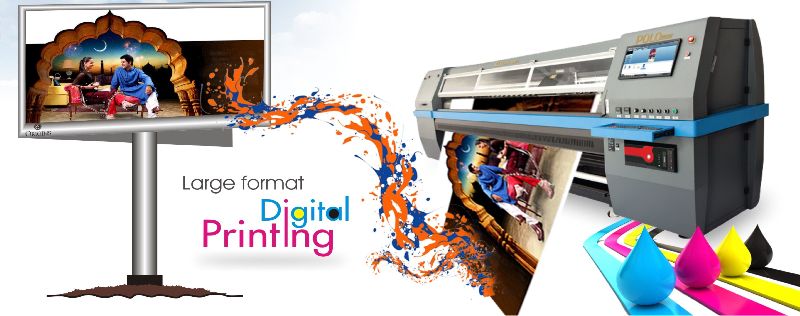Unknown Facts About Digital Printing
Table of ContentsThe 10-Second Trick For Digital PrintingThe Ultimate Guide To Digital PrintingThe Digital Printing StatementsDigital Printing for Beginners10 Simple Techniques For Digital PrintingAll About Digital PrintingThe Buzz on Digital PrintingThe 10-Minute Rule for Digital Printing
Customization also allows organizations to stand apart in a crowded market by creating unique marketing products that separate them from their rivals. One of the main benefits of digital printing is the ability to print variable information. Each published piece can be unique, allowing companies to create personalized advertising and marketing products that talk straight to their target market.Digital printing additionally allows for modification in the style of advertising materials (Digital Printing). With electronic printing, companies can develop layouts that are one-of-a-kind and tailored to their details requirements.
Getting The Digital Printing To Work
This benefits companies that intend to test different advertising and marketing strategies or release new services and products. By publishing smaller sized quantities of marketing materials, companies can lower waste and avoid the requirement for excess inventory. Digital printing is also flexible. It can print on different products, including paper, cardstock, vinyl, and metal.
By making use of various products and layouts, services can develop one-of-a-kind advertising and marketing materials that stick out from their competitors and attract interest from their target audience. Digital printing likewise provides uniformity. With typical printing methods, there is typically variation between prints because of distinctions in ink insurance coverage, stress, and various other aspects.
This uniformity can help construct client depend on and trustworthiness, showing that business is devoted to offering premium materials. Uniformity is specifically essential for services that want to build consumer depend on and credibility. By guaranteeing that every print corresponds, organizations can reveal that they are dedicated to giving premium materials and taking note of the information.
The Ultimate Guide To Digital Printing

In addition, digital printing creates much less waste since it can publish on demand and in smaller quantities, minimizing the demand for excess stock and products. Digital printing also uses less energy compared to conventional printing methods. Digital printers do not call for as much energy to operate, as they do not need to heat up as much or use as much power to run.
Digital Printing Things To Know Before You Get This

Offset printing needs a plate for each color published. Traditional offset printing is a print approach that utilizes aluminum plates to transfer ink onto a rubber sheet (typically referred to as a "covering").
The Best Strategy To Use For Digital Printing
Countered printing enables for a broad array of print materials to be used throughout production. The premium content photos produced through balanced out printing make it the favored technique, especially among graphic designers, when looking for the greatest shade reproduction, information, and professional-looking prints.
The basic printing approach remains countered. For digital inkjet printing, ink is moved directly onto the surface area. As opposed to relying on light weight aluminum plates and rubber blankets to transfer a picture, digital printing utilizes liquid ink throughout manufacturing. Standard home inkjet printers are just one of one of the most common electronic printing methods.
The Basic Principles Of Digital Printing
Because balanced out printing can mix custom-made shade inks for each task, it will naturally get the shades spot-on. Count on countered printing for clean, distinct types and images without streaks or areas.
It costs a great deal to start an offset work. You have to invest money into creating home plates, which requires time. However, view it when you've invested it, every one of the products prepare to go, and you'll spend less on big countered work than a digital print, which is regarding the same per item regardless of exactly how big the work obtains.
Each print is similar. You risk fewer weird variations brought on by discrepancies in water and ink. Digital printing is much less costly for low-volume work. The price per unit drops for digital printing, so at some time, they crisscross. Altering details within a single print task. Say you were printing out postcards advertising a performance.
The 9-Minute Rule for Digital Printing
While digital printing or inkjet printing is the preferred choice in the existing times, there are engaging factors to transform from balanced out to why not find out more electronic printing systems. When printing countered or electronically, critical choices and procedures are entailed in shade matching.
Industrial inkjet printing supplies convenience for printing on several various substratums. Digital printing is excellent for consumers who do not require longer runs and warehousing products.

One advantage of electronic printing is picking from a wide variety of electronic substrates. With balanced out printing, substratums compose, on average, 30% of the cost of the job. With electronic printing, the expense of the substrate in the overall job is small. This permits more selections than in the past, and that's excellent for marketing professionals and businesses.
Everything about Digital Printing
drop-on-demand is the second printing technology to take into consideration. Continuous inkjet systems need substantial maintenance, more operator training, and higher downtime. Nonetheless, devices costs in inkjet printing are far lower than balanced out printing as there are no plate-making, plates, and press costs. Past the capital expenditure, the prepress equipment and printing presses need extremely skilled drivers in balanced out printing, which adds labor prices.